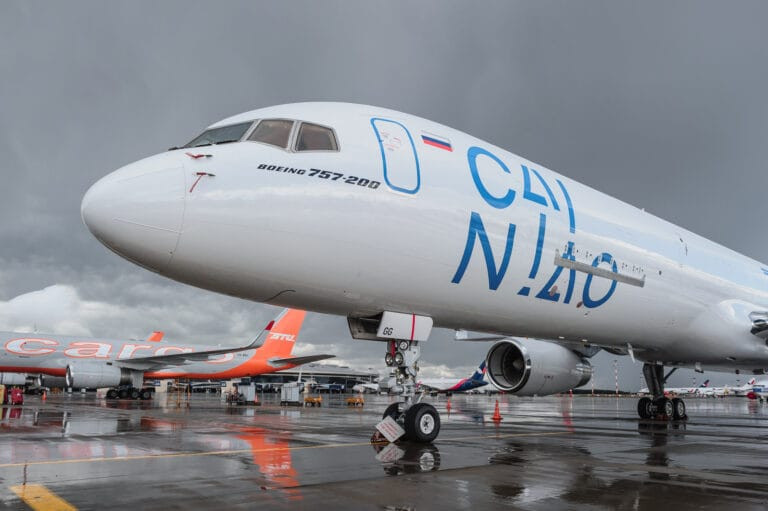- Cainiao is reshaping airfreight for the e-commerce era, offering tailored, data-driven solutions that balance speed, cost, and reliability while delivering full end-to-end visibility through its digital control tower.
- Its Q4 readiness hinges on precision and flexibility, combining proactive capacity forecasting, real-time monitoring, and dual control of partners and proprietary assets to keep networks agile under pressure.
- With AI set to redefine freight optimisation and pricing, Cainiao is investing in smarter infrastructure and adaptive capacity models to build the next generation of elastic, intelligent logistics networks.
e-commerce volumes are dictating how air freight networks are built, scheduled and priced, forcing operators to rethink everything from capacity planning to digital visibility. Providers who once relied on standard block-space agreements are being pushed to offer segmented, customisable solutions that give shippers more control over speed, cost and reliability.
Maggie Wu, Head of Aviation Logistics, Cross-Border Business at Cainiao, says the company has been restructuring both its service portfolio and its digital backbone to stay ahead of shifting expectations.
“Firstly, we have developed and continually refined a diversified portfolio of freight solutions designed to give our e-commerce clients precise control over the critical trade-off between speed and cost. This is never a one-size-fits-all operation,” Wu said. Cainiao’s offerings range from premium direct flights for urgent stock replenishment to consolidated transit options, as well as hybrid models such as air-to-air trans-shipment and sea-air services.
That tailoring is paired with a push into real-time visibility. “Our digital platform provides real-time visibility into every stage of the journey and allows for proactive intervention,” Wu explained. Moving from traditional tracking to “true, end-to-end online operational monitoring” is designed to identify exceptions—such as customs delays or missed connections—before they impact schedules.
Building elasticity into peak planning
For e-commerce logistics, Q4 remains the critical test. Wu pointed to Cainiao’s dual approach of partner networks and direct control. “We meticulously select best-in-class partners for each segment of the logistics chain. However, for mission-critical functions that have the greatest impact on speed and stability—such as line-haul, customs brokerage, or last-mile injection—we either manage them through our own proprietary assets or exert strict operational oversight.”
Preparation begins months ahead. “Well in advance of Q4, we work with our clients to forecast demand and pre-emptively secure capacity across our entire network—from aircraft block-space agreements to ground-level sorting staff. We develop robust plans and backup routes to mitigate any potential disruptions.”
That forward planning is supported by integrated IT systems and a control tower approach. “Through integrated IT systems and a centralised control tower, we maintain end-to-end visibility and facilitate constant communication between all stakeholders. That transparency lets us spot and clear bottlenecks in real time, ensuring the entire operational chain functions as one seamless, efficient machine.”
Infrastructure, platforms and capacity models
Cainiao continues to invest in physical infrastructure. “Yes, we actively build and own foundational logistics infrastructure where it matters most—such as our major e-commerce consolidation hubs, smart warehouses and proprietary logistics technology,” Wu confirmed.
But she emphasises digital platforms as the efficiency engine. “They enhance operational speed by automating bookings and documentation, reduce communication costs by providing a single source of truth for all stakeholders, and optimise resource utilisation by matching cargo with available capacity in real-time.” At the same time, she cautions against over-standardisation: “A standard booking system might not easily accommodate a client’s unique packaging, labelling, or multi-destination splitting requirements.”
Capacity planning follows a two-tier model. “First, we establish a baseline capacity calibrated to our annual average demand… Second, layered on top of this foundation, we implement dynamic quarterly adjustments.” Wu described this system as balancing stability with flexibility, ensuring continuity while avoiding wasted resources in off-peak months.
Growth lanes and the role of AI
While traditional lanes remain strong, Cainiao sees growth shifting geographically. “Over the past year, while established trade lanes remain robust, the most compelling e-commerce growth has emerged from two regions: Latin America—with Mexico as the epicentre—and the Middle East,” Wu said.
Looking further ahead, she argued that the most disruptive force will come from AI rather than physical automation. “We see AI revolutionising the commercial core of our industry, enabling dynamic, real-time pricing for freight forwarding that adapts instantly to market conditions, and powering sophisticated algorithms to hyper-optimise load planning, ensuring every cubic meter of valuable cargo space is utilised with maximum efficiency.”




